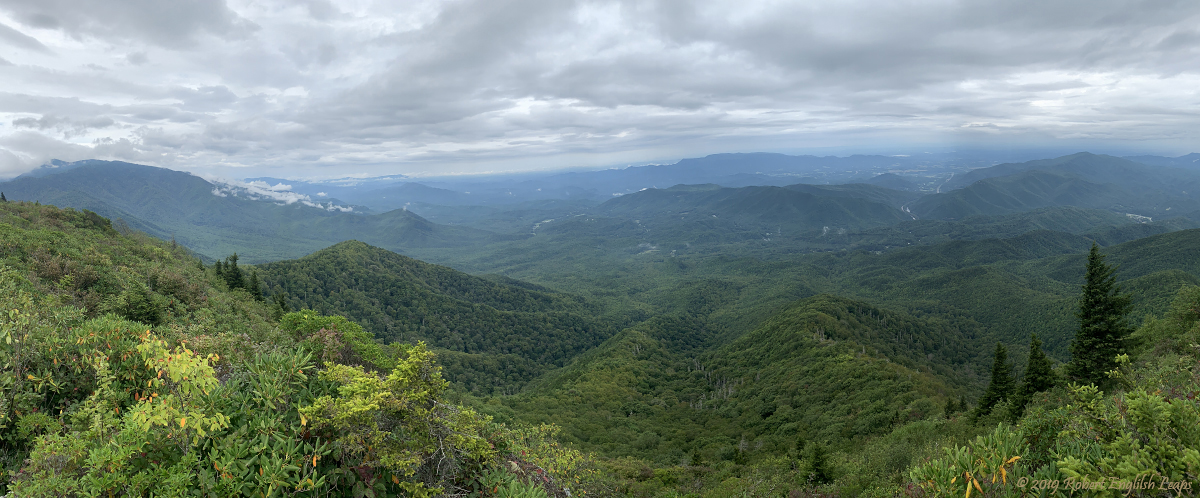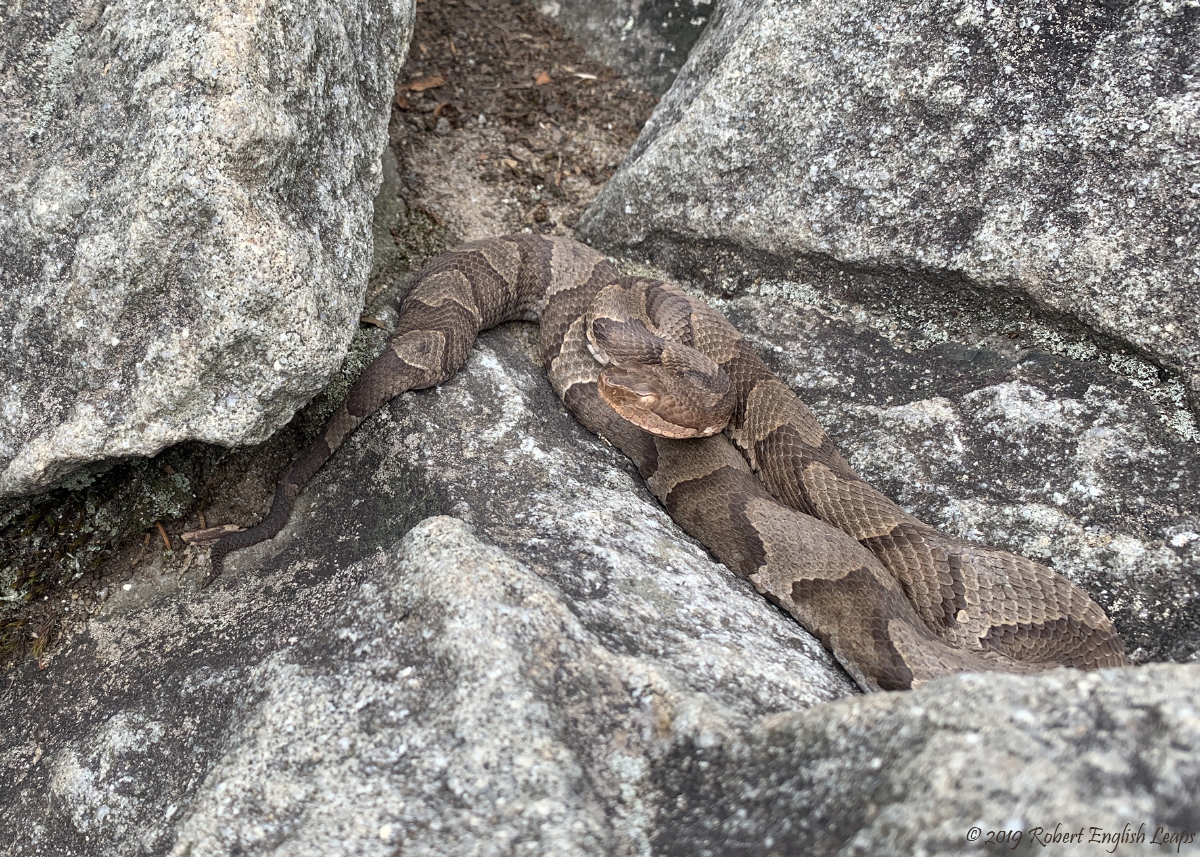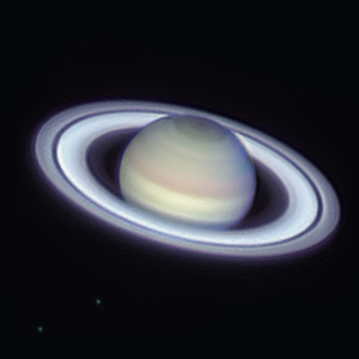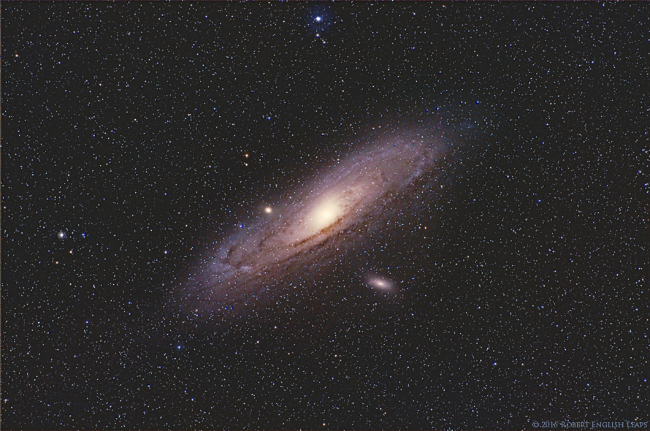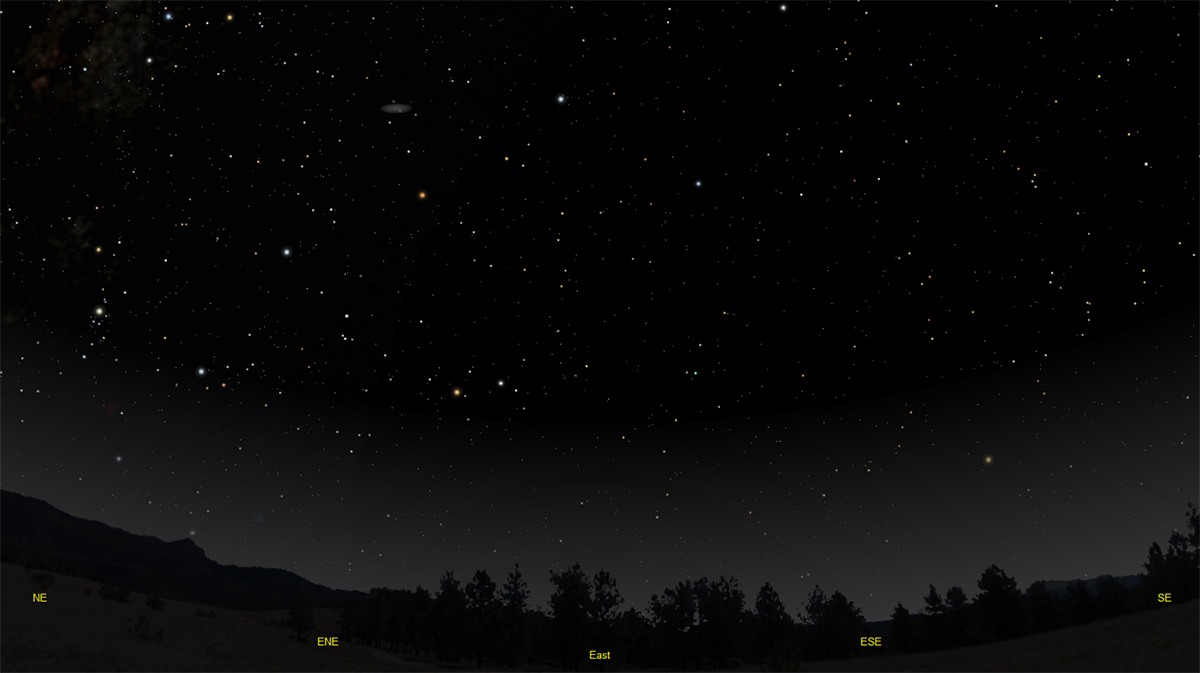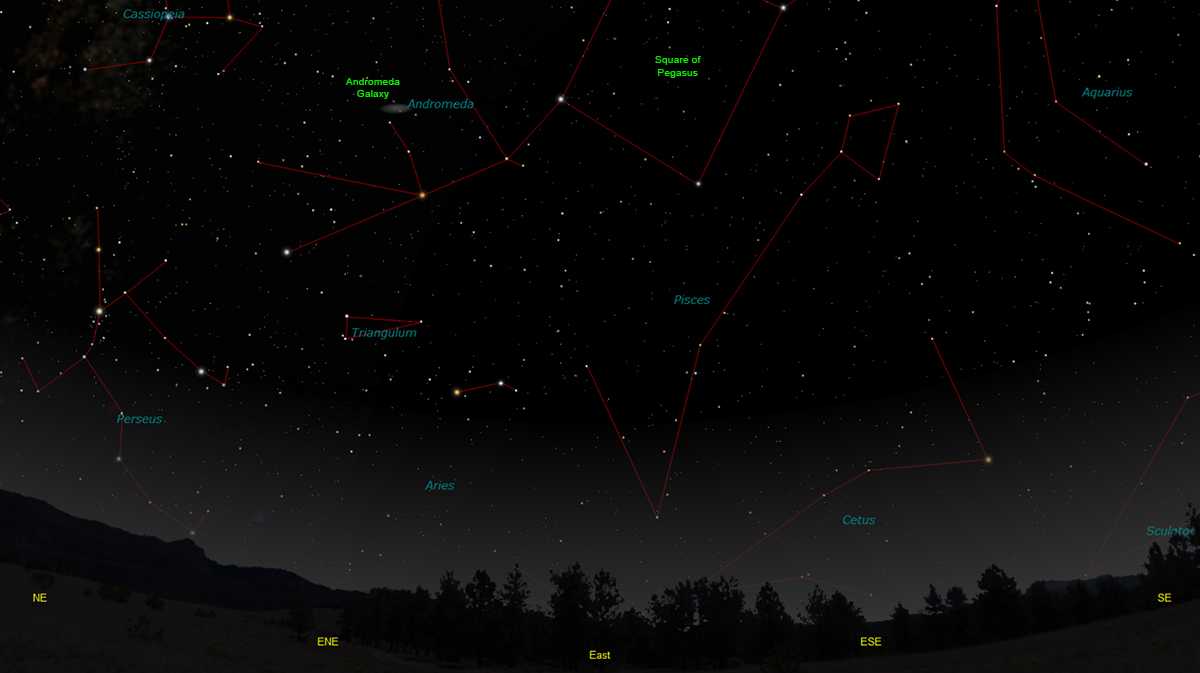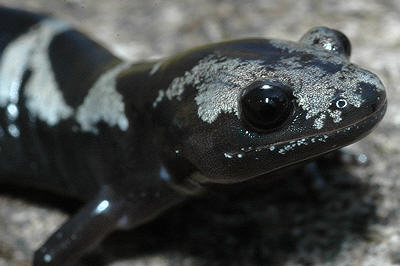The purpose of this feature is to give scout leaders, educators and naturalists an idea of some of the natural events coming up each month. We will try to cover a variety of natural events ranging from sky events to calling periods of amphibians, bird and mammal watching tips, prominent wildflowers and anything else that comes to mind. We will also note prominent constellations appearing over the eastern horizon at mid-evening each month for our area for those who would like to learn the constellations. If you have suggestions for other types of natural information you would like to see added to this calendar, let us know! Note: You can click on the hyperlinks to learn more about some of the featured items. To return to the Calendar, hit the "back" button on your browser, NOT the "back" button on the web page. All charts are available in a "printer friendly" mode, with black stars on a white background. Left clicking on each chart will take you to a printable black and white image. Though we link book references to nationwide sources, we encourage you to support your local book store whenever possible.
Notes From August 2019 On August 26th we returned to the Great Smoky Mountains National Park for another hike. This time our starting point was the Cosby campground, in the northeastern corner of the park. From there we hiked up and over Mount Cammerer.
There was a chance of rain all day, but we only had a couple of light rain showers. With the trees overhead, we barely felt it. We began at sunrise to avoid the crowds. We traveled up the steep Low Gap Trail until we intersected the Appalachian Trail. We then took the AT to a spur trail that led to the Lookout tower on Mount Cammerer.
Alhough we didn't hear any thrushes this time, we heard several Black-throated Blue Warblers, a Red-breasted Nuthatch and a Golden-crowned Kinglet. Dark-eyed Juncos flitted in and out of view as we walked along. We saw no other hikers until we were having our lunch at the lookout tower. A couple of hikers from Pennsylvania arrived, and we passed one other hiker on the way back down the spur trail to rejoin the AT. After that we were pretty much alone again. American Toads were everywhere, constantly hopping out of our way as we made our way down the mountain. Many had the rather striking coloration of the one at right. The trail descended from the summit steeply for the first few miles, with many loose rocks to dodge. The last part of the trail was a much easier. It was level for long stretches and a lot smoother. That was a welcome change, as our total mileage was 18.0 miles and our altitude gain was over 3,800 feet for the hike. The lone hiker we met on the spur trail mentioned that he had seen a Northern Copperhead on a large rock outcropping on his way up the mountain. He hiked up to the summit from the opposite direction we did, so we'd be passing the spot on our way down. He showed us an image. Coming down we recognized the outcropping and stopped to have a look. We did not search long before we found it in a crevice near the top of the outcropping, soaking in the warm sun.
We tried not to disturb it's basking time, and after taking a few images we headed on down the mountain. We arrived back at the campground around 5:00pm, after ten hours of hiking. It was quite a day!
Sky Events for September 2019: The September Equinox, the Autumnal Equinox in the Northern Hemisphere, comes at 3:50am EDT on the morning of September 23rd. This is the first day of fall in the Northern Hemisphere.
Jupiter continues to be a bright beacon in the southern sky this month. The great planet is in Ophiuchus. Look for it at dusk above and to the left of the bright reddish star Antares in Scorpius. This is a great time to view both Jupiter and Saturn. You'll get the best views if you observe them in the early evening when they are highest in the sky. After sunset, facing south, Jupiter will be the first starlike object that becomes visible. You can easily see the four Galilean moons of Jupiter in binoculars if you brace them against something steady. All four moons are not always visible since they are sometimes eclipsed by the planet or close enough to be lost in the glare of Jupiter. Once you spot Jupiter, look to it's left. In a few minutes Saturn will be the next starlike object you'll see. Saturn will not be as bright as Jupiter, or appear as white. In binoculars you won't be able to see the rings and globe as separate parts, but you'll see the noticably elliptical shape of the rings. The apparent diameter of the outside of Saturn's rings is about equal to the apparent diameter of Jupiter's globe. As an extra treat, if your night skies are relatively free from light pollution, you can see the Milky Way in between Jupiter and Saturn as the sky becomes fully dark. Saturn is dazzling in just about any size telescope, a tiny gem. This is a terrific time to see the rings at almost the maximum angle possible. Look for the dark Cassini's Division in the rings.
The views below show the sky looking east at 10:15pm EDT on August 22nd. The first view shows the sky with the constellations outlined and names depicted. Star and planet names are in green. Constellation names are in blue. The second view shows the same scene without labels. In Andromeda, see if you can pick out the soft glow of the Andromeda Galaxy. It's shown on the chart below. If you succeed in spotting it, you'll be seeing an object that's about 2.5 million light-years distant! Small telescopes may allow you to pick out the two brightest satellite galaxies of the Andromeda Galaxy . These are NGC 205 (visible below the core of the Andromeda Galaxy in the image at right) and NGC 221 (visible above and to the left of the core). Your best chance to see them will be when the galaxy is high overhead. On Learning the Constellations: We advise learning a few constellations each month, and then following them through the seasons. Once you associate a particular constellation coming over the eastern horizon at a certain time of year, you may start thinking about it like an old friend, looking forward to its arrival each season. The stars in the evening scene above, for instance, will always be in the same place relative to the horizon at the same time and date each September. Of course, the planets do move slowly through the constellations, but with practice you will learn to identify them from their appearance. In particular, learn the brightest stars for they will guide you to the fainter stars. Once you can locate the more prominent constellations, you can "branch out" to other constellations around them. It may take you a little while to get a sense of scale, to translate what you see on the computer screen or what you see on the page of a book to what you see in the sky. Look for patterns, like the stars that make up the "Square of Pegasus." The earth's rotation causes the constellations to appear to move across the sky just as the sun and the moon appear to do. If you go outside earlier than the time shown on the charts, the constellations will be lower to the eastern horizon. If you observe later, they will have climbed higher. As each season progresses, the earth's motion around the sun causes the constellations to appear a little farther towards the west each night for any given time of night.Recommended: Sky & Telescope's Pocket Star Atlas is beautiful, compact star atlas. A good book to learn the constellations is Patterns in the Sky, by Hewitt-White. You may also want to check out at H. A. Rey's classic, The Stars, A New Way to See Them. For sky watching tips, an inexpensive good guide is Secrets of Stargazing, by Becky Ramotowski.
A good general reference book on astronomy is the Peterson
Field Guide,
A Field Guide to the Stars and Planets, by Pasachoff. The book retails for around $14.00.
The Virtual Moon Atlas is a terrific way to learn the surface features of the Moon. And it's free software. You can download the Virtual Moon Atlas here. Apps: We really love the Sky Safari 6 Pro. It is available for both iOS and Android operating systems. There are three versions. The Pro is simply the best astronomy app we've ever seen. The description of the Pro version reads, "includes over 100 million stars, 3 million galaxies down to 18th magnitude, and 750,000 solar system objects; including every comet and asteroid ever discovered." A nother great app is the Photographer's Ephemeris. Great for finding sunrise, moonrise, sunset and moonset times and the precise place on the horizon that the event will occur. Invaluable not only for planning photographs, but also nice to plan an outing to watch the full moon rise. Available for both androids and iOS operating systems.
Amphibians:
Frog and toad choruses start waning in September but some frogs and toads
are still calling.
Spring Peepers
are also know as "Autumn Pipers" and can be heard calling from patches of
woods during the fall. Listen also for the very dry and scratchy
version of the Upland Chorus Frog's song on rainy fall evenings.
Green Frogs and Southern Leopard Frogs occasionally call.
You can sometimes find
the eggs of Marbled Salamanders in wooded wetlands in the fall. Recommended: The Frogs and Toads of North America, Lang Elliott, Houghton Mifflin Co. Archives (Remember to use the back button on your browser, NOT the back button on the web page!) Natural Calendar February 2019 Natural Calendar December 2018 Natural Calendar November 2018 Natural Calendar September 2018 Natural Calendar February 2018 Natural Calendar December 2017 Natural Calendar November 2017 Natural Calendar October 2017Natural Calendar September 2017 Natural Calendar February 2017 Natural Calendar December 2016 Natural Calendar November 2016 Natural Calendar September 2016Natural Calendar February 2016 Natural Calendar December 2015 Natural Calendar November 2015 Natural Calendar September 2015 Natural Calendar November 2014 Natural Calendar September 2014 Natural Calendar September 2013 Natural Calendar December 2012 Natural Calendar November 2012 Natural Calendar September 2012 Natural Calendar February 2012 Natural Calendar December 2011 Natural Calendar November 2011 Natural Calendar September 2011 Natural Calendar December 2010 Natural Calendar November 2010 Natural Calendar September 2010 Natural Calendar February 2010 Natural Calendar December 2009 Natural Calendar November 2009 Natural Calendar September 2009 Natural Calendar February 2009 Natural Calendar December 2008 Natural Calendar November 2008 Natural Calendar September 2008 Natural Calendar February 2008 Natural Calendar December 2007 Natural Calendar November 2007 Natural Calendar September 2007 Natural Calendar February 2007 Natural Calendar December 2006 Natural Calendar November 2006 Natural Calendar September 2006 Natural Calendar February 2006
Natural Calendar December 2005
Natural Calendar November 2005
Natural Calendar September 2005
Natural Calendar February 2005
Natural Calendar December 2004
Natural Calendar November 2004
Natural Calendar September 2004
Natural Calendar February 2004
Natural Calendar December 2003
Natural Calendar November 2003 Natural Calendar February 2003 Natural Calendar December 2002 Natural Calendar November 2002 Nature Notes Archives: Nature Notes was a page we published in 2001 and 2002 containing our observations about everything from the northern lights display of November 2001 to frog and salamander egg masses. Night scenes prepared with The Sky Professional from Software Bisque All images and recordings © 2019 Leaps
|
|
